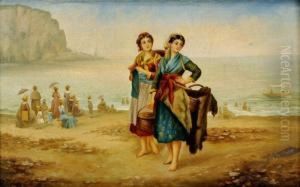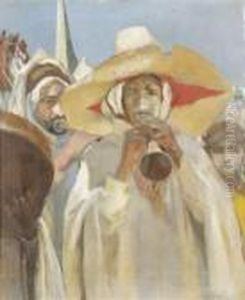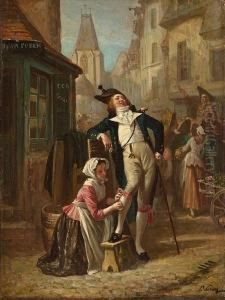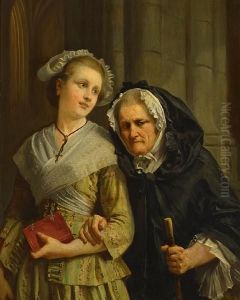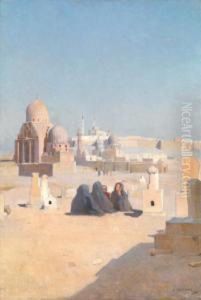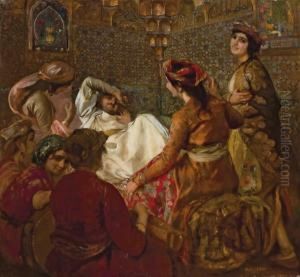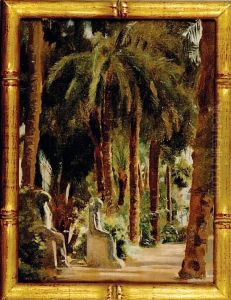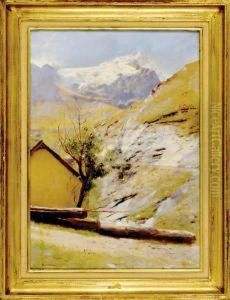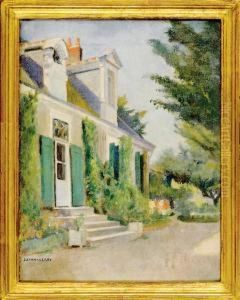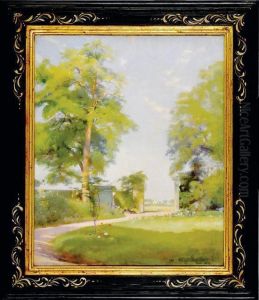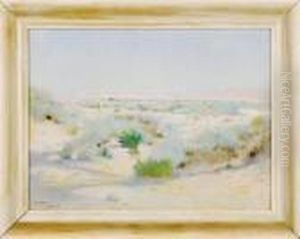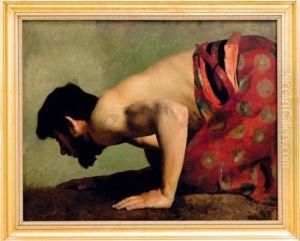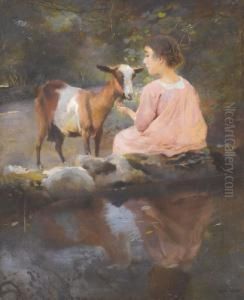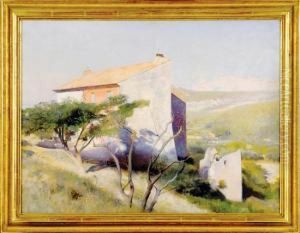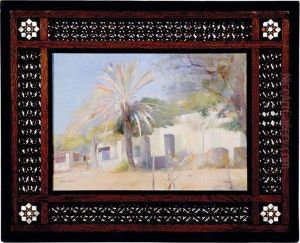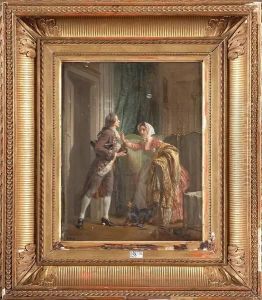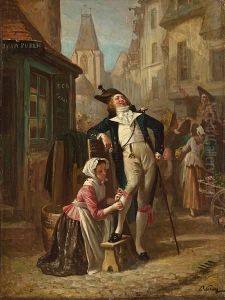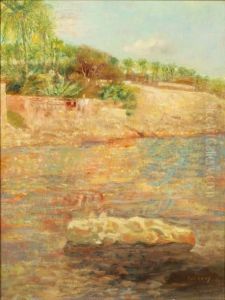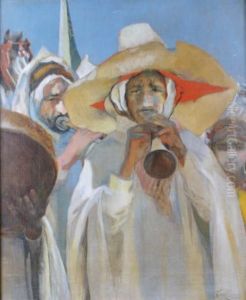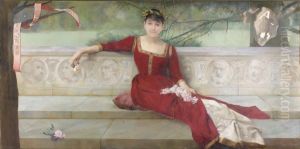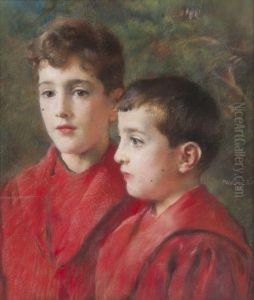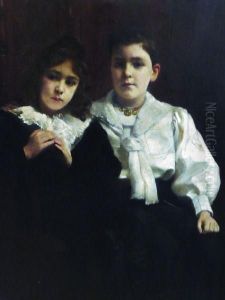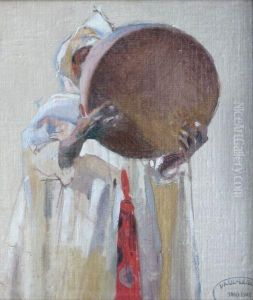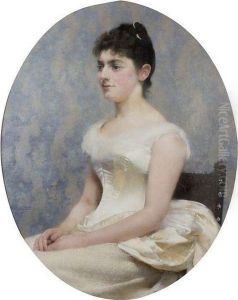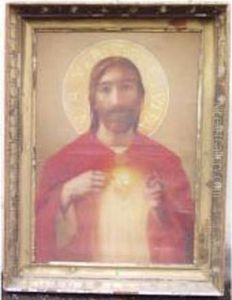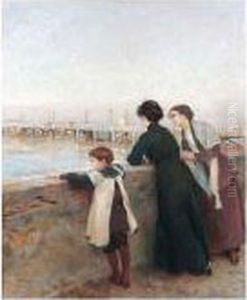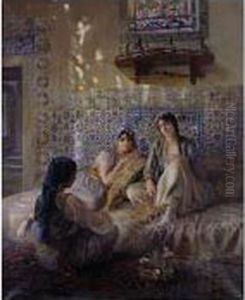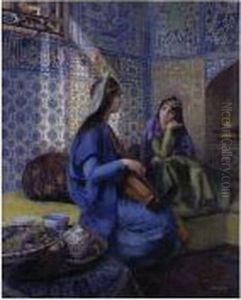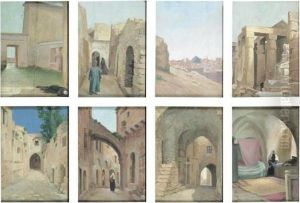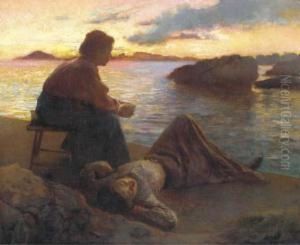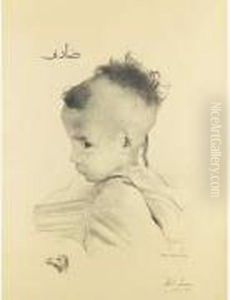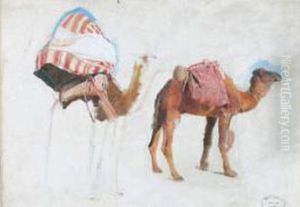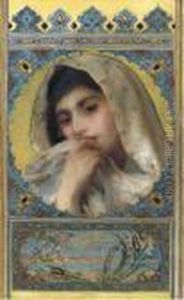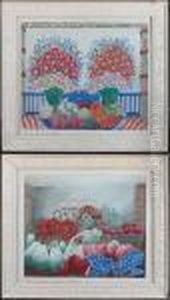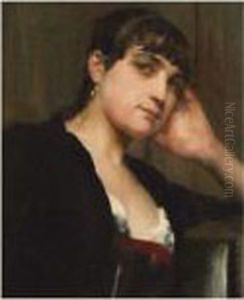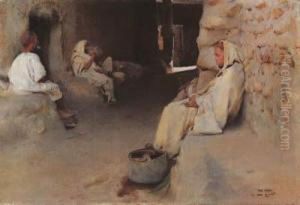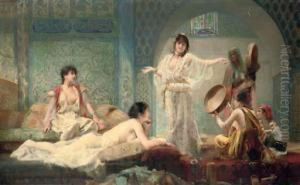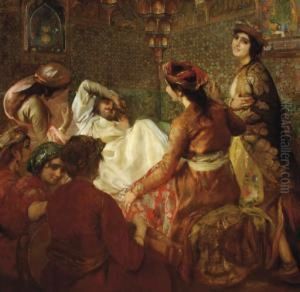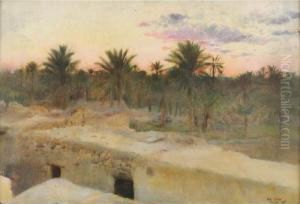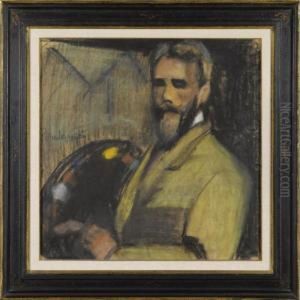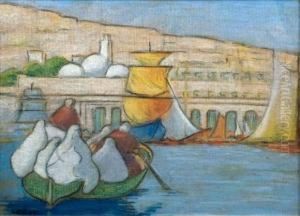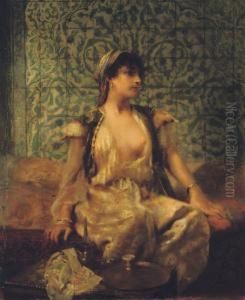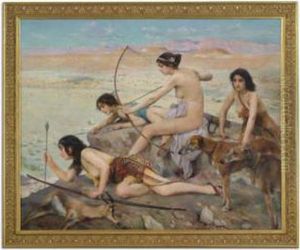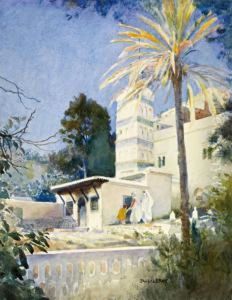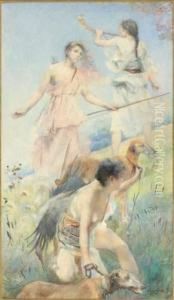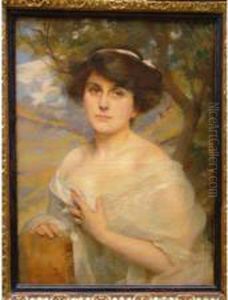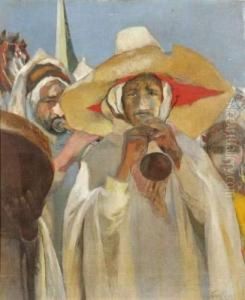Paul Alexandre Alfr. Leroy Paintings
Paul Alexandre Alfred Leroy was a French painter born on July 28, 1860, in Paris, France. He studied under Jean-Léon Gérôme at the École des Beaux-Arts in Paris, an institution well-known for its academic training of artists. Leroy’s work was influenced by the academic tradition of the time, which emphasized classical subjects, meticulous technique, and a polished finish in painting.
Leroy exhibited at the Paris Salon, a prestigious annual and then biennial art exhibition in France, which was the official exhibition of the Académie des Beaux-Arts. His work was well received, and he became known for his genre paintings, historical scenes, and portraits. Throughout his career, Leroy developed a reputation for his depiction of scenes inspired by the French Renaissance and the 18th century, often imbued with a sense of romanticism and attention to detail.
In 1887, Leroy won the Prix de Rome with his work 'The Death of Timophanes,' which allowed him to study in Rome. The Prix de Rome was a French scholarship for arts students, initially for painters and sculptors, that was established in 1663 during the reign of Louis XIV of France. Winners were given a bursary that allowed them to stay in Rome for three to five years at the expense of the state. This experience had a profound impact on Leroy's artistic development and deepened his appreciation for classical art and architecture.
During his career, Leroy also explored Orientalism, a popular genre among European artists in the 19th century that depicted aspects of Eastern cultures. He was known for his decorative approach and was often commissioned to design murals for public and private buildings, including churches and municipal sites.
Despite the changing art scene with the rise of Impressionism and Post-Impressionism, Leroy remained committed to the academic style of painting. Nevertheless, his work continued to be appreciated for its beauty and craftsmanship. Paul Alexandre Alfred Leroy passed away on October 17, 1942, in Rochefort-en-Yvelines, France, leaving behind a legacy of work that epitomized the academic art traditions of his era.

